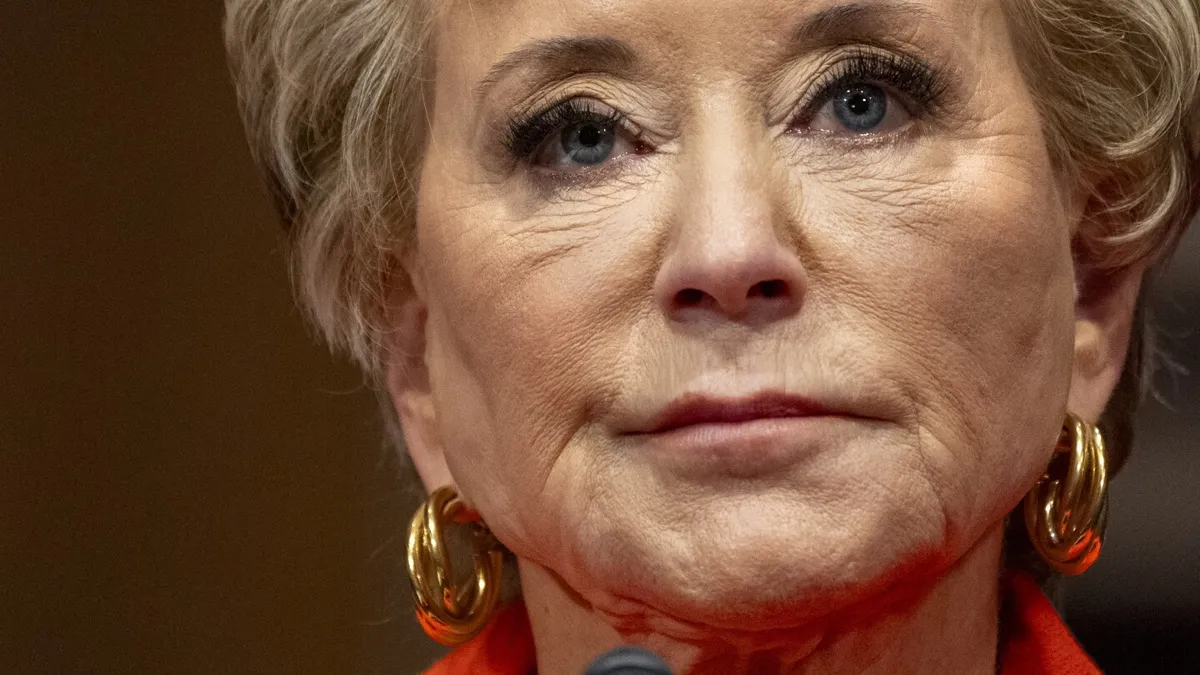
In a significant move, the Education Department has announced plans to lay off over 1,300 employees as part of a broader strategy to reduce its workforce by half. This decision is a precursor to President Donald Trump’s initiative to dismantle the agency, raising concerns about the agency’s capability to maintain its regular operations. The announcement was made on Tuesday, indicating a shift in the federal education landscape.
Following the layoffs, the Education Department will see its staff decrease to approximately 2,050 from the previous total of 4,100. This dramatic downsizing is part of President Trump’s larger agenda to minimize the size and influence of the federal government. The administration has already initiated job cuts within the agency through buyout offers and the termination of probationary employees, which has compounded the uncertainty surrounding the agency's future.
The layoffs at the Education Department are just one aspect of a sweeping reduction in federal employment. Thousands of positions are anticipated to be eliminated across various departments, including the Department of Veterans Affairs and the Social Security Administration. Additionally, the Education Department is terminating leases on buildings located in major cities such as New York, Boston, Chicago, and Cleveland, further illustrating the extent of the downsizing effort.
Despite the layoffs, Education Secretary Linda McMahon reassured stakeholders that the department would continue to fulfill its essential functions. These include the distribution of federal aid to schools, management of student loans, and oversight of Pell Grants. In her statement, McMahon emphasized, “Today’s reduction in force reflects the Department of Education’s commitment to efficiency, accountability, and ensuring that resources are directed where they matter most: to students, parents, and teachers.”
In a memo issued on March 3, the day of her Senate confirmation, McMahon urged employees to prepare for significant cuts. She described the department’s new mission as one that aims to eliminate bureaucratic inefficiencies and transfer authority to individual states. This shift in focus raises questions about the future of federal educational oversight.
On Tuesday, the department informed its employees that the Washington headquarters and regional offices would be closed on Wednesday for unspecified “security reasons.” Access to these facilities was prohibited until they reopened on Thursday, further adding to the climate of uncertainty among staff.
President Trump’s campaign rhetoric included promises to eliminate the Education Department, criticizing it for being influenced by “radicals, zealots, and Marxists.” While McMahon acknowledged during her confirmation hearing that only Congress can abolish the agency, she suggested that significant cuts and reorganization might be on the horizon. Advocates and Democrats are concerned that these cuts could adversely affect critical functions such as civil rights enforcement for students with disabilities and the management of the $1.6 trillion federal student loan portfolio.
In her testimony, McMahon asserted that her goal is not to defund essential programs but to enhance their efficiency. The Education Department, even before the layoffs, was already one of the smallest Cabinet-level agencies, employing 3,100 individuals in Washington and an additional 1,100 in regional offices nationwide. As the department navigates this turbulent period, employees have been under increasing pressure to resign, first through a deferred resignation initiative and later with a buyout offer of $25,000, which expired on March 3. This offer included a warning of impending significant layoffs.